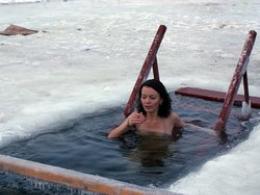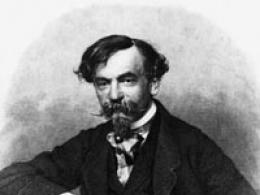Convert kilojoule per cubic meter to international kilocalorie per cubic meter. meter
Length and distance converter Mass converter Converter of volume measures of bulk products and food products Area converter Converter of volume and units of measurement in culinary recipes Temperature converter Converter of pressure, mechanical stress, Young's modulus Converter of energy and work Converter of power Converter of force Converter of time Linear speed converter Flat angle Converter thermal efficiency and fuel efficiency Converter of numbers in various number systems Converter of units of measurement of quantity of information Currency rates Women's clothing and shoe sizes Men's clothing and shoe sizes Angular velocity and rotation frequency converter Acceleration converter Angular acceleration converter Density converter Specific volume converter Moment of inertia converter Moment of force converter Torque converter Specific heat of combustion converter (by mass) Energy density and specific heat of combustion converter (by volume) Temperature difference converter Coefficient of thermal expansion converter Thermal resistance converter Thermal conductivity converter Specific heat capacity converter Energy exposure and thermal radiation power converter Heat flux density converter Heat transfer coefficient converter Volume flow rate converter Mass flow rate converter Molar flow rate converter Mass flow density converter Molar concentration converter Mass concentration in solution converter Dynamic (absolute) viscosity converter Kinematic viscosity converter Surface tension converter Vapor permeability converter Water vapor flow density converter Sound level converter Microphone sensitivity converter Converter Sound Pressure Level (SPL) Sound Pressure Level Converter with Selectable Reference Pressure Luminance Converter Luminous Intensity Converter Illuminance Converter Computer Graphics Resolution Converter Frequency and Wavelength Converter Diopter Power and Focal Length Diopter Power and Lens Magnification (×) Converter electric charge Linear charge density converter Surface charge density converter Volume charge density converter Electric current converter Linear current density converter Surface current density converter Electric field strength converter Electrostatic potential and voltage converter Electrical resistance converter Electrical resistivity converter Electrical conductivity converter Electrical conductivity converter Electrical capacitance Inductance Converter American Wire Gauge Converter Levels in dBm (dBm or dBm), dBV (dBV), watts, etc. units Magnetomotive force converter Magnetic field strength converter Magnetic flux converter Magnetic induction converter Radiation. Ionizing radiation absorbed dose rate converter Radioactivity. Radioactive decay converter Radiation. Exposure dose converter Radiation. Absorbed dose converter Decimal prefix converter Data transfer Typography and image processing unit converter Timber volume unit converter Calculation of molar mass D. I. Mendeleev’s periodic table of chemical elements
1 kilojoule per cubic meter [kJ/m³] = 0.2388458966 international kilocalorie per cubic meter. meter
Initial value
Converted value
joule per cubic meter joule per liter megajoule per cubic meter kilojoule per cubic meter international kilocalorie per cubic meter meter thermochemical calorie per cubic meter centimeter therms per cubic foot therms per gallon brit. term. unit (int.) per cubic meter British pound term. unit (therm.) per cubic meter pound centigrade heat unit per cubic pound cubic meter per joule liter per joule US. gallon per horsepower-hour gallon per metric hp-hour
Specific heat
Learn more about energy density and specific heat of combustion of fuel (by volume)
The energy density and specific heat of combustion (by volume) converter is used to convert units of several physical quantities that are used to quantify the energy properties of substances in various fields of science and technology.
Definitions and units of measurement
Energy Density
Energy Density fuel, also called energy intensity, is defined as the amount of energy released during complete combustion of fuel per unit of its mass or volume. Unlike English, where there are two terms for energy density by mass and volume, in Russian one term is used - energy density, when talking about energy density both by mass and volume.
Thus, energy density, specific heat of combustion and energy intensity characterize a substance or thermodynamic system. Energy density can also characterize a system in which no combustion occurs at all. For example, energy can be stored in a lithium battery or lithium-ion battery in the form of chemical energy, an ionistor or even in a conventional transformer in the form of electromagnetic field energy, in which case we can also talk about energy density.

Specific fuel consumption
Specific fuel consumption- this is also an energy characteristic, but not of a substance, but of a specific engine in which fuel is burned to convert the chemical energy of the fuel into useful work in moving the vehicle. Specific consumption is equal to the ratio of fuel consumption per unit time to power(for automobile engines) or to traction(for aircraft and rocket engines that produce thrust; this does not include aircraft piston and turboprop engines). In English terminology, two types of specific fuel consumption are clearly distinguished: specific consumption (fuel consumption per unit of time) per unit of power (eng. brake specific fuel consumption) or per unit of thrust (eng. thrust specific fuel consumption). The word “brake” indicates that specific fuel consumption is determined on a dynamometer, the main element of which is the braking device.

Specific fuel consumption by volume, the units of which can be converted in this converter, is equal to the ratio of volumetric fuel consumption (for example, liters per hour) to engine power or, which is the same, the ratio of the volume of fuel spent to perform a certain job. For example, a specific fuel consumption of 100 g/kWh means that to create a power of 1 kilowatt, the engine must consume 100 grams of fuel per hour or, which is the same, to perform useful work of 1 kilowatt-hour, the engine must consume 100 g of fuel .
Units
Volumetric energy density measured in units of energy per unit volume, such as joules per cubic meter (J/m³, SI) or British thermal units per cubic foot (BTU/ft³, British Customary Units).
As we understand, the units of measurement J/m³, J/l, kcal/m³, BTU/lb³ are used to measure several physical quantities that have much in common. They are used to measure:
- energy content in the fuel, that is, the energy content of the fuel by volume
- heat of combustion of fuel per unit volume
- volumetric energy density in a thermodynamic system.
During the redox reaction of fuel with oxygen, a relatively large amount of energy is released. The amount of energy released during combustion is determined by the type of fuel, the conditions of its combustion and the mass or volume of fuel burned. For example, partially oxidized fuels such as ethyl alcohol (ethanol C₂H₅OH) are less efficient than hydrocarbon fuels such as kerosene or gasoline. Energy is usually measured in joules (J), calories (cal), or British thermal units (BTU). The energy content of a fuel, or its calorific value, is the energy obtained when a certain volume or mass of fuel is burned. The specific heat of combustion of a fuel shows the amount of heat that is released during complete combustion of a unit volume or mass of fuel.
The energy content of a fuel can be expressed as follows:
- in units of energy per mole of fuel, for example, kJ/mol;
- in units of energy per mass of fuel, such as BTU/lb;
- in units of energy per volume of fuel, for example in kcal/m³.

The same units, physical quantities and even measurement methods (liquid integrator calorimeter) are used to measure the energy value of food. In this case, energy value is defined as the amount of heat released during the combustion of a certain amount of food product. Let us note again that this converter is used to convert units of measurement of volumetric quantities, not mass quantities.
Higher and lower heating values of fuel combustion
The measured heating value of a fuel depends on what happens to the water during combustion. Recall that the formation of steam requires a lot of heat and that when water vapor turns into a liquid state, a large amount of heat is released. If water remains in a vapor state when fuel is burned and its characteristics are measured, then it contains heat that will not be measured. This way, only the net energy contained in the fuel will be measured. They say that this is measured lower heating value of fuel. If, during measurement (or engine operation), water is completely condensed from a vapor state and cooled to the original temperature of the fuel before it begins to burn, a significantly larger amount of heat generated will be measured. At the same time they say that it is measured higher heating value of fuel. It should be noted that the internal combustion engine cannot use the additional energy that is released when steam condenses. Therefore, it is more correct to measure the lower calorific value, which is what many manufacturers do when measuring engine fuel consumption. However, American manufacturers often indicate in the characteristics of manufactured engines data taking into account the higher calorific value. The difference between these values for the same engine is approximately 10%. This is not very much, but it leads to confusion if the engine specifications do not specify the measurement method.
Note that the higher and lower heating values apply only to fuels containing hydrogen, for example, gasoline or diesel fuel. When burning pure carbon or carbon monoxide, the higher and lower calorific values cannot be determined, since these substances do not contain hydrogen and, therefore, water is not formed during their combustion.
When fuel is burned in an engine, the actual amount of mechanical work performed as a result of fuel combustion largely depends on the engine itself. Gasoline engines are less efficient in this regard compared to diesel engines. For example, diesel engines of passenger cars have an energy efficiency of 30–40%, while the same value for gasoline engines is only 20–30%.

Fuel energy content measurement
The specific heat of combustion of a fuel is useful for comparing different types of fuel. In most cases, the energy content of the fuel is determined in a liquid integrator calorimeter with an isothermal shell, in which the measurement is carried out while maintaining a constant volume in the so-called “bomb calorimeter”, that is, a thick-walled high-pressure vessel. The calorific value or energy intensity is defined as the amount of heat that is released in a vessel during the combustion of a precisely weighed mass of a fuel sample in an oxygen environment. In this case, the volume of the vessel in which the fuel burns does not change.
In such calorimeters, the high-pressure vessel in which the sample is burned is filled with pure oxygen under pressure. A little more oxygen is added than is needed for complete combustion of the sample. The calorimeter's high-pressure vessel must be able to withstand the pressure of the gases generated during fuel combustion. When burned, all the carbon and hydrogen react with oxygen to form carbon dioxide and water. If combustion does not occur completely, for example, due to a lack of oxygen, carbon monoxide (carbon monoxide CO) is formed or the fuel simply does not burn, which leads to incorrect, underestimated results.
The energy released when a fuel sample is burned in a pressure vessel is distributed between the pressure vessel and the absorption medium (usually water) surrounding the pressure vessel. The temperature increase resulting from a reaction is measured. Then the heat of combustion of the fuel is calculated. To do this, the results of temperature measurements and calibration tests are used, for which material with known characteristics is burned in this calorimeter.
Any liquid integrator calorimeter consists of the following parts:

- a thick-walled high-pressure vessel (“bomb”) in which a chemical combustion reaction occurs (4);
- a calorimetric vessel containing liquid, usually having highly polished outer walls to reduce heat transfer; a “bomb” is placed in this vessel with water (5);
- mixer
- a thermally insulated casing that protects the calorimetric vessel with a high-pressure vessel from external temperature influences (7);
- temperature sensor or thermometer that measures the change in temperature in a calorimetric vessel (1)
- an electric igniter with fusible wire and electrodes (6) for igniting fuel in a sample cup (3) installed in a pressure vessel (4); And
- tube (2) for supplying oxygen O₂.
Due to the fact that the combustion reaction in an oxygen environment creates high pressure in a durable vessel within a short period of time, measurements can be dangerous and safety regulations must be strictly observed. The calorimeter, its safety valves and ignition electrodes must be maintained in working order and clean. The weight of the sample should not exceed the maximum allowable for this calorimeter.
Specific fuel consumption per unit of thrust is a measure of the efficiency of any engine that burns fuel to produce thrust. These are the engines installed on the reusable transport spacecraft Atlantis.
Do you find it difficult to translate units of measurement from one language to another? Colleagues are ready to help you. Post a question in TCTerms and within a few minutes you will receive an answer.
(Fig. 14.1 - Calorific value
fuel capacity)
Pay attention to the calorific value (specific heat of combustion) of various types of fuel, compare the indicators. The calorific value of fuel characterizes the amount of heat released during complete combustion of fuel weighing 1 kg or volume 1 m³ (1 l). Most often, calorific value is measured in J/kg (J/m³; J/l). The higher the specific heat of combustion of the fuel, the lower its consumption. Therefore, calorific value is one of the most significant characteristics of fuel.
The specific heat of combustion of each type of fuel depends on:
- From its flammable components (carbon, hydrogen, volatile combustible sulfur, etc.).
- From its moisture and ash content.
| Table 4 - Specific heat of combustion of various energy carriers, comparative analysis of costs. | |||||||||
| Type of energy carrier | Calorific value | Volumetric density of matter (ρ=m/V) | Unit price standard fuel | Coeff. useful action (efficiency) of the system heating, % | Price per 1 kWh | Implemented systems | |||
| MJ | kWh | ||||||||
| (1MJ=0.278kWh) | |||||||||
| Electricity | - | 1.0 kWh | - | 3.70 rub. per kWh | 98% | 3.78 rub. | Heating, hot water supply (DHW), air conditioning, cooking | ||
| Methane (CH4, temperature boiling point: -161.6 °C) | 39.8 MJ/m³ | 11.1 kWh/m³ | 0.72 kg/m³ | 5.20 rub. per m³ | 94% | 0.50 rub. | |||
| Propane (C3H8, temperature boiling point: -42.1 °C) | 46,34 MJ/kg | 23,63 MJ/l | 12,88 kWh/kg | 6,57 kWh/l | 0.51 kg/l | 18.00 rub. hall | 94% | 2.91 rub. | Heating, hot water supply (DHW), cooking, backup and permanent power supply, autonomous septic tank (sewerage), outdoor infrared heaters, outdoor barbecues, fireplaces, baths, designer lighting |
| Butane C4H10, temperature boiling point: -0.5 °C) | 47,20 MJ/kg | 27,38 MJ/l | 13,12 kWh/kg | 7,61 kWh/l | 0.58 kg/l | 14.00 rub. hall | 94% | 1.96 rub. | Heating, hot water supply (DHW), cooking, backup and permanent power supply, autonomous septic tank (sewerage), outdoor infrared heaters, outdoor barbecues, fireplaces, baths, designer lighting |
| Propane-butane (LPG - liquefied hydrocarbon gas) | 46,8 MJ/kg | 25,3 MJ/l | 13,0 kWh/kg | 7,0 kWh/l | 0.54 kg/l | 16.00 rub. hall | 94% | 2.42 rub. | Heating, hot water supply (DHW), cooking, backup and permanent power supply, autonomous septic tank (sewerage), outdoor infrared heaters, outdoor barbecues, fireplaces, baths, designer lighting |
| Diesel fuel | 42,7 MJ/kg | 11,9 kWh/kg | 0.85 kg/l | 30.00 rub. per kg | 92% | 2.75 rub. | Heating (heating water and generating electricity is very expensive) | ||
| Firewood (birch, humidity - 12%) | 15,0 MJ/kg | 4,2 kWh/kg | 0.47-0.72 kg/dm³ | 3.00 rub. per kg | 90% | 0.80 rub. | Heating (inconvenient to cook food, almost impossible to get hot water) | ||
| Coal | 22,0 MJ/kg | 6,1 kWh/kg | 1200-1500 kg/m³ | 7.70 rub. per kg | 90% | 1.40 rub. | Heating | ||
| MAPP gas (a mixture of liquefied petroleum gas - 56% with methyl acetylene-propadiene - 44%) | 89,6 MJ/kg | 24,9 kWh/m³ | 0.1137 kg/dm³ | -R. per m³ | 0% | Heating, hot water supply (DHW), cooking, backup and permanent power supply, autonomous septic tank (sewerage), outdoor infrared heaters, outdoor barbecues, fireplaces, baths, designer lighting | |||

(Fig. 14.2 - Specific heat of combustion)
According to the table “Specific Heat of Combustion of Various Energy Carriers, Comparative Analysis of Costs,” propane-butane (liquefied petroleum gas) is inferior in economic benefits and prospects for use only to natural gas (methane). However, attention should be paid to the tendency towards an inevitable increase in the cost of main gas, which is currently significantly underestimated. Analysts predict an inevitable reorganization of the industry, which will lead to a significant increase in the price of natural gas, perhaps even exceeding the cost of diesel fuel.
Thus, liquefied petroleum gas, the cost of which will remain virtually unchanged, remains extremely promising - the optimal solution for autonomous gasification systems.
GOST 22667-82
Group B19
INTERSTATE STANDARD
COMBUSTIBLE NATURAL GASES
Calculation method for determining calorific value, relative density and Wobbe number
Combustible natural gases. Calculation method for determination of calorific value, specific gravity
and Wobbe index
MKS 75.160.30
Date of introduction 1983-07-01
By Decree of the USSR State Committee on Standards dated August 23, 1982 N 3333, the introduction date was set to 07/01/83
The validity period was lifted according to Protocol No. 4-93 of the Interstate Council for Standardization, Metrology and Certification (IUS 4-94)
INSTEAD GOST 22667-77
EDITION with Amendment No. 1, approved in August 1992 (IUS 11-92).
This standard establishes methods for calculating the higher and lower heating values, relative density and Wobbe number of dry natural hydrocarbon gases based on the component composition and known physical quantities of the pure components.
The standard does not apply to gases in which the hydrocarbon fraction exceeds 0.1%.
(Changed edition, Amendment No. 1).
1. DETERMINATION OF HEAT OF COMBUSTION
1.1. The volumetric heat of combustion of gas (higher or lower) is calculated from the component composition and heat of combustion of individual gas components.
1.2. The component composition of the gas is determined according to GOST 23781-87 by the absolute calibration method. All components whose volume fraction exceeds 0.005% are determined, except for methane, the content of which is calculated by the difference of 100% and the sum of all components.
1.1, 1.2. (Changed edition, Amendment No. 1).
1.3. Heat of combustion () higher () or lower () in MJ/m (kcal/m) is calculated using the formula
where is the heat of combustion of the gas (higher or lower) of the th gas component (application);
- share of the th component in the gas.
2. DETERMINATION OF RELATIVE DENSITY
2.1. Relative density () is calculated using the formula
where is the relative density of the th gas component (application).
3. DETERMINATION OF WOBBE NUMBER
3.1. Wobbe number () (lowest or highest) in MJ/m (kcal/m) is calculated using the formula
4. PROCESSING RESULTS
4.1. When calculating, it is allowed not to take into account the heat of combustion and the relative density of gas components, the values of which are less than 0.005 MJ/m (1 kcal/m) and 0.0001, respectively.
4.2. The value of the heat of combustion of the components is rounded to 0.005 MJ/m (1 kcal/m), the final result is rounded to 0.05 MJ/m (10 kcal/m).
4.3. The value of the relative density of the components is rounded to 0.0001, the final result is to 0.001 relative density units.
4.4. When recording the determination results, it is necessary to indicate the temperature conditions (20 °C or 0 °C).
5. ACCURACY OF THE METHOD
Convergence
The calorific value of gas, calculated from two consecutive analyzes of one gas sample by one performer, using the same method and instrument, is considered reliable (with a 95% confidence probability) if the discrepancy between them does not exceed 0.1%.
Section 5 (Introduced additionally, Amendment No. 1).
APPENDIX (required)
APPLICATION
Mandatory
Table 1
Higher and lower calorific value and relative density* of dry natural gas components at 0 °C and 101.325 kPa**
________________
Component name | Heat of combustion | Relative density |
||||
highest | ||||||
n-butane | n-CH | |||||
u-butane | u-CH | |||||
Pentane | ||||||
Hexanes | ||||||
Octanes | ||||||
Benzene | ||||||
Toluene | ||||||
Hydrogen | ||||||
Carbon monoxide | ||||||
Hydrogen sulfide | ||||||
Carbon dioxide | ||||||
Oxygen | ||||||
table 2
Higher and lower heating values and relative density* of dry natural gas components at 20 °C and 101, 325 kPa**
________________
* Air density is assumed to be 1.
** Table data is given taking into account the compressibility coefficient.
Component name | Heat of combustion | Relative density |
||||
highest | ||||||
n-butane | n-CH | |||||
u-butane | u-CH | |||||
Pentane | ||||||
Hexanes | ||||||
Octanes | ||||||
Benzene | ||||||
Toluene | ||||||
Hydrogen | ||||||
Carbon monoxide | ||||||
Hydrogen sulfide | ||||||
Carbon dioxide | ||||||
Oxygen | ||||||
Electronic document text
prepared by Kodeks JSC and verified against:
official publication
Gaseous fuel. Specifications
and methods of analysis: Sat. standards. -
M.: Standartinform, 2006
Specific volumetric ,
she is specific volumetric heat of combustion of fuel,
she is specific volumetric calorific value of fuel.
Specific volumetric
The heat of combustion of a fuel is the amount of heat
which is released during complete combustion of a volumetric unit of fuel.
Online converter for translation
Translation (conversion)
units of volumetric calorific value of fuel
(calorific value per unit volume of fuel)
The mass (weight) specific calorific value is almost the same for all types of fuel of organic origin. A kilogram of gasoline, a kilogram of firewood, and a kilogram of coal will give approximately the same amount of heat during combustion.
Another thing - volumetric calorific value. Here, the calorific value of 1 liter of gasoline, 1 dm3 of firewood or 1 dm3 of coal will differ significantly. Therefore, it is the volumetric calorific value that is the most important characteristic of a substance as a type or grade of fuel.
Transfer (conversion) of the volumetric calorific value of fuel is used in thermotechnical calculations based on comparative economic or energy characteristics for different types of fuel, or for different grades of the same type of fuel. Such calculations (based on comparative characteristics for dissimilar fuels) are needed when choosing it as a type or type of energy carrier for alternative heating and heating of buildings and premises. Since various regulatory and accompanying documentation for different grades and types of fuel often contain the value of the calorific value of the fuel in different volumetric and thermal units, during the comparison process, when bringing the value of the volumetric calorific value to a single denominator, errors or inaccuracies can easily creep in.
For example:
– The volumetric calorific value of natural gas is measured
in MJ/m3 or kcal/m3 (by )
– The volumetric calorific value of firewood can easily be expressed
in kcal/dm3, Mcal/dm3 or in Gcal/m3
To compare the thermal and economic efficiency of these two types of fuel, it must be reduced to a single unit of measurement of volumetric calorific value. And for this you need just such an online calculator
Calculator test:
1 MJ/m3 = 238.83 kcal/m3
1 kcal/m3 = 0.00419 MJ/m3
For online conversion (translation) of values:
– select the names of the converted values at the input and output
– enter the value of the converted value
The converter gives an accuracy of four decimal places. If, after conversion, only zeros are observed in the “Result” column, then you need to select another dimension of the converted values or simply click on. Because it is impossible to convert a calorie into a gigacalorie with an accuracy of four decimal places.
P.S.
Converting joules and calories per unit volume is simple mathematics. However, chasing a bunch of zeros at once is very tiring. So I made this converter to relieve the creative process.
The tables present the mass specific heat of combustion of fuel (liquid, solid and gaseous) and some other combustible materials. The following fuels were considered: coal, firewood, coke, peat, kerosene, oil, alcohol, gasoline, natural gas, etc.
List of tables:
During the exothermic reaction of fuel oxidation, its chemical energy is converted into thermal energy with the release of a certain amount of heat. The resulting thermal energy is usually called the heat of combustion of the fuel. It depends on its chemical composition, humidity and is the main one. The heat of combustion of fuel per 1 kg of mass or 1 m 3 of volume forms the mass or volumetric specific heat of combustion.
The specific heat of combustion of a fuel is the amount of heat released during the complete combustion of a unit mass or volume of solid, liquid or gaseous fuel. In the International System of Units, this value is measured in J/kg or J/m 3.
The specific heat of combustion of a fuel can be determined experimentally or calculated analytically. Experimental methods for determining calorific value are based on practical measurement of the amount of heat released when a fuel burns, for example in a calorimeter with a thermostat and a combustion bomb. For fuel with a known chemical composition, the specific heat of combustion can be determined using the periodic formula.
There are higher and lower specific heats of combustion. The higher calorific value is equal to the maximum amount of heat released during complete combustion of the fuel, taking into account the heat expended on the evaporation of moisture contained in the fuel. The lowest heat of combustion is less than the highest value by the amount of heat of condensation, which is formed from the moisture of the fuel and hydrogen of the organic mass, which turns into water during combustion.
To determine fuel quality indicators, as well as in thermal calculations usually use lower specific heat of combustion, which is the most important thermal and performance characteristic of the fuel and is shown in the tables below.
Specific heat of combustion of solid fuels (coal, firewood, peat, coke)
The table presents the values of the specific heat of combustion of dry solid fuel in the dimension MJ/kg. Fuel in the table is arranged by name in alphabetical order.
Of the solid fuels considered, coking coal has the highest calorific value - its specific heat of combustion is 36.3 MJ/kg (or in SI units 36.3·10 6 J/kg). In addition, high calorific value is characteristic of hard coal, anthracite, charcoal and brown coal.
Fuels with low energy efficiency include wood, firewood, gunpowder, milling peat, and oil shale. For example, the specific heat of combustion of firewood is 8.4...12.5, and that of gunpowder is only 3.8 MJ/kg.
| Fuel | |
|---|---|
| Anthracite | 26,8…34,8 |
| Wood pellets (pellets) | 18,5 |
| Dry firewood | 8,4…11 |
| Dry birch firewood | 12,5 |
| Gas coke | 26,9 |
| Blast coke | 30,4 |
| Semi-coke | 27,3 |
| Powder | 3,8 |
| Slate | 4,6…9 |
| Oil shale | 5,9…15 |
| Solid rocket fuel | 4,2…10,5 |
| Peat | 16,3 |
| Fibrous peat | 21,8 |
| Milled peat | 8,1…10,5 |
| Peat crumb | 10,8 |
| Brown coal | 13…25 |
| Brown coal (briquettes) | 20,2 |
| Brown coal (dust) | 25 |
| Donetsk coal | 19,7…24 |
| Charcoal | 31,5…34,4 |
| Coal | 27 |
| Coking coal | 36,3 |
| Kuznetsk coal | 22,8…25,1 |
| Chelyabinsk coal | 12,8 |
| Ekibastuz coal | 16,7 |
| Freztorf | 8,1 |
| Slag | 27,5 |
Specific heat of combustion of liquid fuels (alcohol, gasoline, kerosene, oil)
A table is given of the specific heat of combustion of liquid fuel and some other organic liquids. It should be noted that fuels such as gasoline, diesel fuel and oil have high heat release during combustion.
The specific heat of combustion of alcohol and acetone is significantly lower than traditional motor fuels. In addition, liquid rocket fuel has a relatively low calorific value and, with complete combustion of 1 kg of these hydrocarbons, an amount of heat will be released equal to 9.2 and 13.3 MJ, respectively.
| Fuel | Specific heat of combustion, MJ/kg |
|---|---|
| Acetone | 31,4 |
| Gasoline A-72 (GOST 2084-67) | 44,2 |
| Aviation gasoline B-70 (GOST 1012-72) | 44,1 |
| Gasoline AI-93 (GOST 2084-67) | 43,6 |
| Benzene | 40,6 |
| Winter diesel fuel (GOST 305-73) | 43,6 |
| Summer diesel fuel (GOST 305-73) | 43,4 |
| Liquid rocket fuel (kerosene + liquid oxygen) | 9,2 |
| Aviation kerosene | 42,9 |
| Kerosene for lighting (GOST 4753-68) | 43,7 |
| Xylene | 43,2 |
| High sulfur fuel oil | 39 |
| Low sulfur fuel oil | 40,5 |
| Low-sulfur fuel oil | 41,7 |
| Sulphurous fuel oil | 39,6 |
| Methyl alcohol (methanol) | 21,1 |
| n-Butyl alcohol | 36,8 |
| Oil | 43,5…46 |
| Methane oil | 21,5 |
| Toluene | 40,9 |
| White spirit (GOST 313452) | 44 |
| Ethylene glycol | 13,3 |
| Ethyl alcohol (ethanol) | 30,6 |
Specific heat of combustion of gaseous fuels and combustible gases
A table is presented of the specific heat of combustion of gaseous fuel and some other combustible gases in the dimension MJ/kg. Of the gases considered, it has the highest mass specific heat of combustion. The complete combustion of one kilogram of this gas will release 119.83 MJ of heat. Also, fuel such as natural gas has a high calorific value - the specific heat of combustion of natural gas is 41...49 MJ/kg (for pure gas it is 50 MJ/kg).
| Fuel | Specific heat of combustion, MJ/kg |
|---|---|
| 1-Butene | 45,3 |
| Ammonia | 18,6 |
| Acetylene | 48,3 |
| Hydrogen | 119,83 |
| Hydrogen, mixture with methane (50% H 2 and 50% CH 4 by weight) | 85 |
| Hydrogen, mixture with methane and carbon monoxide (33-33-33% by weight) | 60 |
| Hydrogen, mixture with carbon monoxide (50% H 2 50% CO 2 by weight) | 65 |
| Blast furnace gas | 3 |
| Coke Oven Gas | 38,5 |
| Liquefied hydrocarbon gas LPG (propane-butane) | 43,8 |
| Isobutane | 45,6 |
| Methane | 50 |
| n-Butane | 45,7 |
| n-Hexane | 45,1 |
| n-Pentane | 45,4 |
| Associated gas | 40,6…43 |
| Natural gas | 41…49 |
| Propadiene | 46,3 |
| Propane | 46,3 |
| Propylene | 45,8 |
| Propylene, mixture with hydrogen and carbon monoxide (90%-9%-1% by weight) | 52 |
| Ethane | 47,5 |
| Ethylene | 47,2 |
Specific heat of combustion of some combustible materials
A table is provided of the specific heat of combustion of some combustible materials (wood, paper, plastic, straw, rubber, etc.). Materials with high heat release during combustion should be noted. Such materials include: rubber of various types, expanded polystyrene (foam), polypropylene and polyethylene.
| Fuel | Specific heat of combustion, MJ/kg |
|---|---|
| Paper | 17,6 |
| Leatherette | 21,5 |
| Wood (bars with 14% moisture content) | 13,8 |
| Wood in stacks | 16,6 |
| Oak wood | 19,9 |
| Spruce wood | 20,3 |
| Wood green | 6,3 |
| Pine wood | 20,9 |
| Capron | 31,1 |
| Carbolite products | 26,9 |
| Cardboard | 16,5 |
| Styrene butadiene rubber SKS-30AR | 43,9 |
| Natural rubber | 44,8 |
| Synthetic rubber | 40,2 |
| Rubber SKS | 43,9 |
| Chloroprene rubber | 28 |
| Polyvinyl chloride linoleum | 14,3 |
| Double-layer polyvinyl chloride linoleum | 17,9 |
| Polyvinyl chloride linoleum on a felt basis | 16,6 |
| Warm-based polyvinyl chloride linoleum | 17,6 |
| Fabric-based polyvinyl chloride linoleum | 20,3 |
| Rubber linoleum (Relin) | 27,2 |
| Paraffin paraffin | 11,2 |
| Polystyrene foam PVC-1 | 19,5 |
| Foam plastic FS-7 | 24,4 |
| Foam plastic FF | 31,4 |
| Expanded polystyrene PSB-S | 41,6 |
| Polyurethane foam | 24,3 |
| Fiberboard | 20,9 |
| Polyvinyl chloride (PVC) | 20,7 |
| Polycarbonate | 31 |
| Polypropylene | 45,7 |
| Polystyrene | 39 |
| High pressure polyethylene | 47 |
| Low-pressure polyethylene | 46,7 |
| Rubber | 33,5 |
| Ruberoid | 29,5 |
| Channel soot | 28,3 |
| Hay | 16,7 |
| Straw | 17 |
| Organic glass (plexiglass) | 27,7 |
| Textolite | 20,9 |
| Tol | 16 |
| TNT | 15 |
| Cotton | 17,5 |
| Cellulose | 16,4 |
| Wool and wool fibers | 23,1 |
Sources:
- GOST 147-2013 Solid mineral fuel. Determination of the higher calorific value and calculation of the lower calorific value.
- GOST 21261-91 Petroleum products. Method for determining the higher calorific value and calculating the lower calorific value.
- GOST 22667-82 Natural flammable gases. Calculation method for determining the calorific value, relative density and Wobbe number.
- GOST 31369-2008 Natural gas. Calculation of calorific value, density, relative density and Wobbe number based on component composition.
- Zemsky G. T. Flammable properties of inorganic and organic materials: reference book M.: VNIIPO, 2016 - 970 p.






